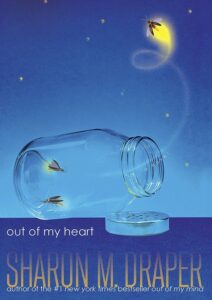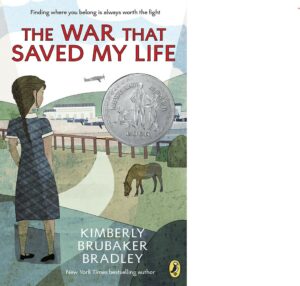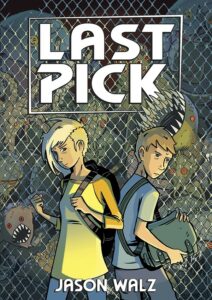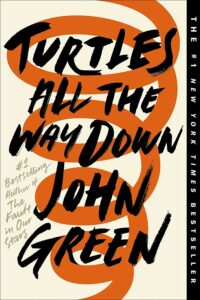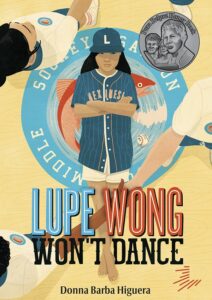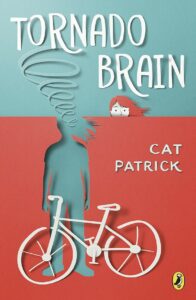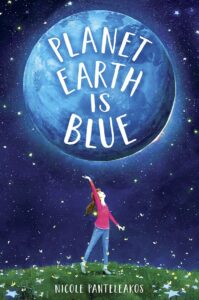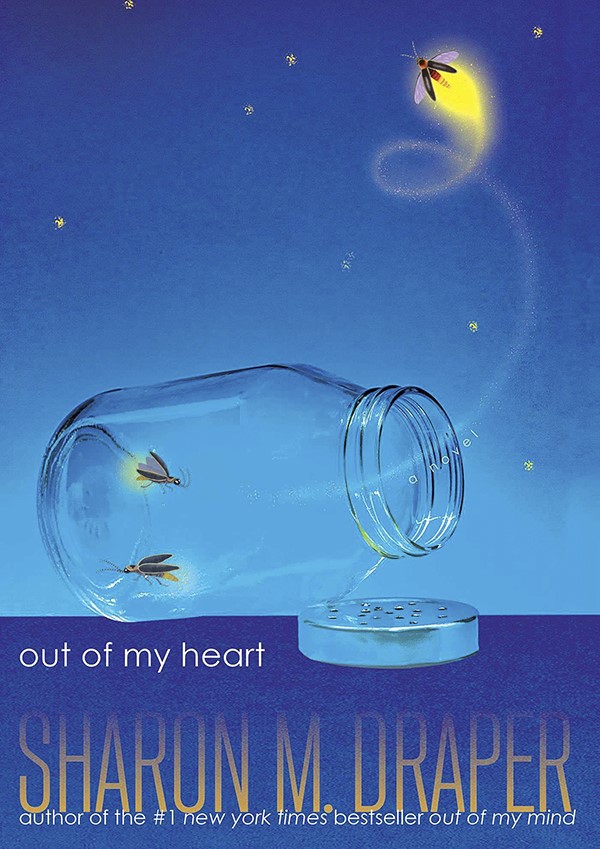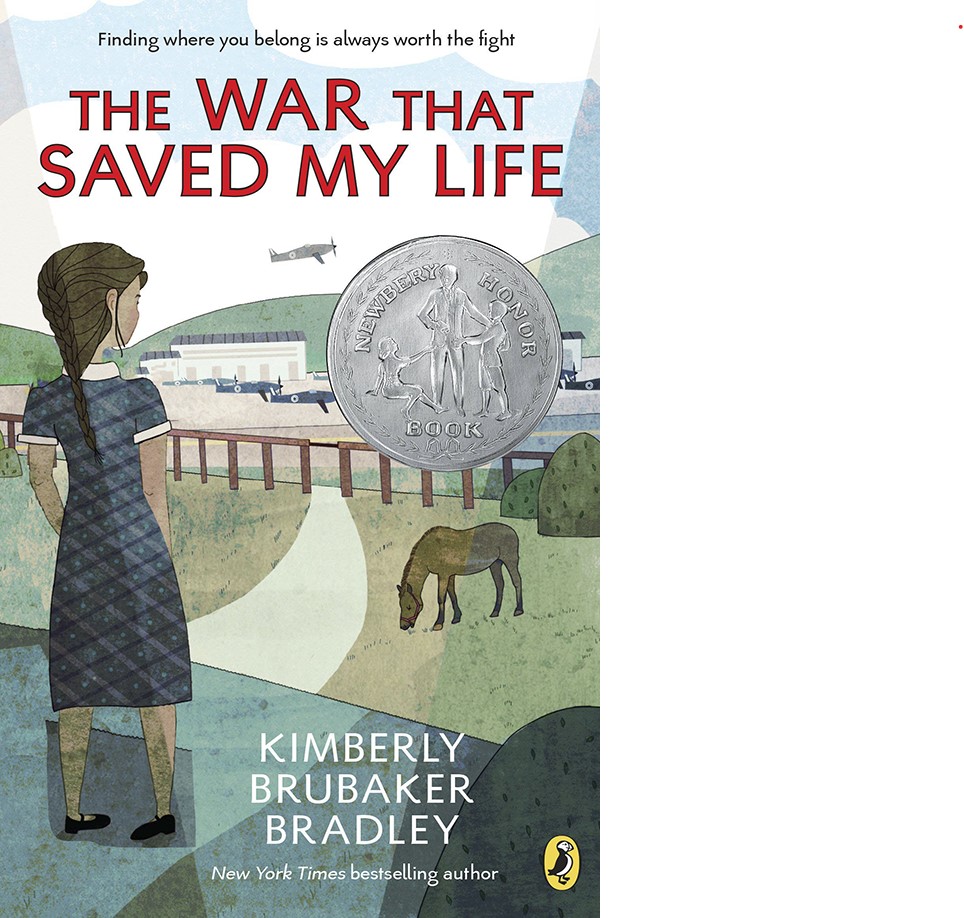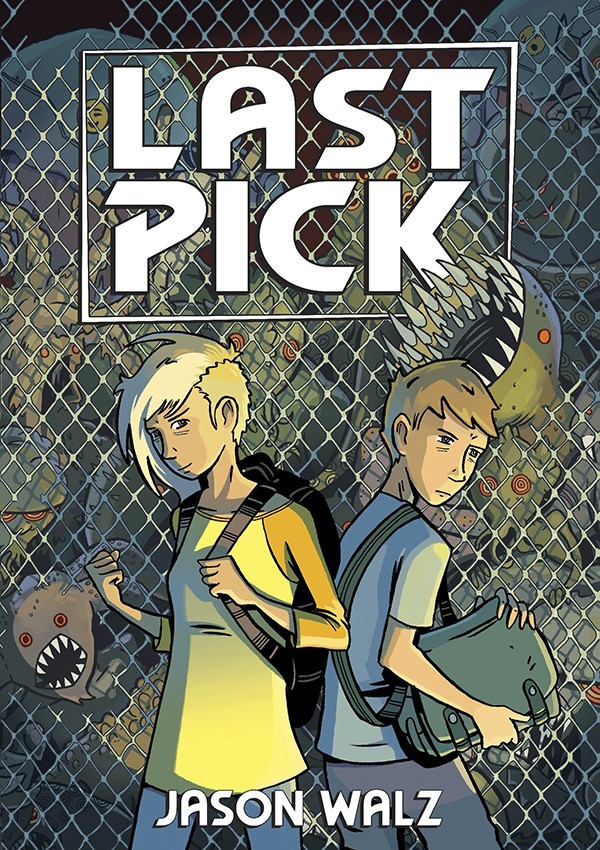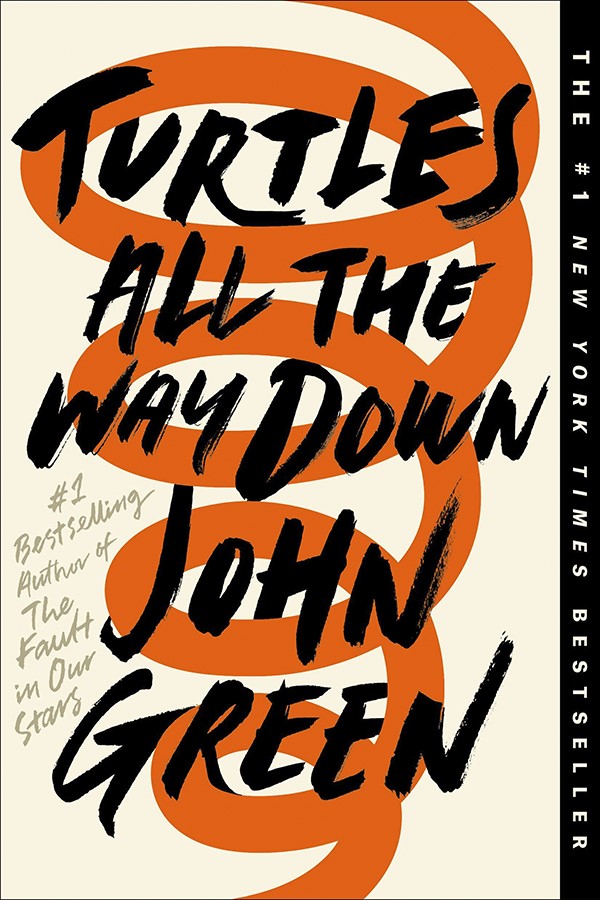Christine Scholma and Bill Boerman-Cornell
Teachers face increasingly difficult challenges when they make choices about children’s and young adult texts to use within their curriculum and to place on the shelves of their classroom libraries. As educators strive to provide diverse representation in their classroom literature, they are also exposed to nation-wide challenges and banning of books in classrooms across the country. Teachers want to provide texts that will help students experience and consider how to navigate a complex world. The books we have reviewed in this article will provide a roadmap for discerning teachers to choose literature with positive portrayals of disability in children’s and young adult literature. The texts reviewed are part of a study we are conducting that focuses on the labels used to describe characters with disabilities and how the characters speak about themselves. As educators present literature to students including characters with disabilities, it is important to consider concepts such as the personal portrayal of the character, social interactions, and exemplary practices (Taylor and Prater).
As educators strive to provide diverse representation in their classroom literature, they are also exposed to nation-wide challenges and banning of books in classrooms across the country.
Although these books have been chosen as examples of a positive portrayal of disability in children’s and young adult literature, we believe that conversations with students will enhance the reading of the texts and provide context. For example, several of the texts use the R-word to refer to a person with a disability. It is our recommendation that any book containing the R-word be prefaced with a conversation about the social harm that the use of this term causes. However, many of the books deal with important social topics such as diversity, grief, foster care, and advocacy. Rich discussions that include students with different abilities will help to broaden student perspectives in meaningful ways.
Rudine Sims-Bishop originally proposed a now widely known analogy for the way students interact with fiction (1). She suggested that children’s fiction books can act as mirrors, windows, and sliding glass doors. In the case of the books we are working with, they can be valuable for your classroom because they act as mirrors, allowing students with disabilities to see characters like themselves in the books. It would be a mistake, however, to think of books with characters who have disabilities as being only for readers who mirror them. Sims-Bishop also talks about the value of using a book as a window to look though (or even a door to step through) into someone else’s life. That is to say that a student who does not have a disability can learn a great deal from a book that allows the student to step into the shoes of a person with a disability, at least to some extent. So, we recommend the following books for your whole class either as a mirror, a window, a door, or all three.
It is also important to remember, when reading any book in order to really understand a group of people, that it is necessary to read multiple stories about multiple lives from multiple perspectives. When we read one book about someone with a disability, we run the risk of assuming the character is reflective of all lives of people within that group. Multiple stories help us to identify both universal experiences (which often cross over the border between the disabled community and the non-disabled community) and experiences that are specific to individual people, but may not apply to everyone in that group.
Sharon M. Draper, Out of My Heart (Atheneum, 2021)
Opening lines: “The firefly hovered over the back of my hand, then landed—slowly, effortlessly. I could hardly feel its delicate touch.”
Interesting quote: “I know quite a bit about speaking out loud, without saying a word” (2).
Genre and format: Regular text realistic fiction
Short summary: Melody thinks her life is pretty good. She has a family and friends that she loves, a wheelchair to get around in, and a Medi-Talker that allows her to be able to communicate out loud using a keyboard. But when she finds out about a camp that is designed for children with disabilities to have a safe and full summer camp experience, she is excited, deeply desires to go, and is terrified all at the same time. Summer camp proves to be everything she had hoped for and more. She discovers more freedom than she has ever had before but also finds herself in a position to advocate for even more freedom.
Why should I read this book? This isn’t a book that goes from one adventure to the next, but Melody, in her relatively quiet way, may be one of the most interesting and sympathetic characters I have ever read. And yet, the deep emotional connections that readers form to Melody are, I believe, not based on sympathy, pity, or charity. Melody is more like a really interesting friend who is daring and can take care of herself but still likes to be around others.
Who is this book best for? This would be a great book for an elementary and middle grades library, or a classroom library. And while it could certainly sustain being a choice for reading groups anywhere from fourth through sixth or seventh grades, it might be most effective as a read-aloud in fifth or sixth grade.
What classroom discussion could this book foster? This book raises some really interesting questions about freedom, independence, agency, and adventure on the one side, and safety, responsibility, and care on the other side. There are also some interesting questions of equity. Melody’s family is lucky enough to be able to afford this experience, and there is some mention of a financial assistance program, but it is certainly the case that not every kid like Melody can access programs like these. Also, society refers to people like Melody and her friends at camp as disabled. Is that an appropriate term for someone who can do everything that Melody can do? How does Melody refer to herself? How do others refer to her? After students have read the whole book, these might be interesting questions to ask.
Kimberly Brubaker Bradley, The War That Saved My Life (Dial, 2015)
Opening lines: “ ‘Ada! Get back from that window!’ Mam’s voice. Shouting. Mam’s arm, grabbing mine, yanking me so I toppled off my chair and fell hard on the floor.”
Interesting quote: “I had so much. I felt so sad” (244).
Genre and format: Regular text historical fiction
Short summary: Ada was born in 1940s England with a clubfoot. While her brother, Jamie, goes off to school each day, Ada’s Mam keeps her locked up at home, telling her she is a disgrace and a monster. When the bombing of London gets bad, Ada learns through Jamie of a train full of children that is heading off into the countryside where the children will stay with families until the bombing is over. She teaches herself (painfully) to walk, and she and Jamie leave on the appointed day while Mam is at work. They end up in a house with a woman named Susan. Susan has her own problems but is willing to take on the dirty children. Ada is so scarred by the abuse she has suffered that she doesn’t believe she is deserving of love. And when Susan tells her there is an operation that could fix her foot, Ada has to struggle with the question of how she could possibly be deserving of such a thing.
Why should I read this book? The summary above doesn’t do it justice. This book is an amazing glimpse at how, while Ada’s disability is repairable, the damage that her Mam has done to her—with the endless string of verbal abuse that has caused her to question her value as a person—is not so easy to recover from. Ada’s story also provides a historical representation of disability in the 1940s in England, which offers readers the opportunity to consider similarities and differences of the perception and support for individuals with disabilities today. This book details Ada’s long journey to believing that she has value and learning to be grateful for her found family.
Who is this book best for? Students in fifth or sixth grade through high school could get a great deal out of this book. It would be a great addition to a classroom or school library. It would also work well for reading groups or whole-class study.
What classroom discussion could this book foster? This book could lead to an interesting question of which is worse: the effect of Ada’s disability in her life or the way Mam causes Ada to see her disability. Susan and the children learn together to be thankful for their lives, but that journey is not linear. Students might think about how difficult that journey to gratefulness is and what stands in the way. Even with her disability, Ada proves herself a vital part of the community. Students might talk about what capabilities Ada demonstrates. It might also be interesting to note the ways in which Ada changes, how those around her support her through times of difficulty, and how Ada supports others.
Jason Walz, Last Pick (First Second, 2018)
Opening lines: “Three years ago, 864 days to be exact, billions of people between the ages of sixteen and sixty-five were whisked away from us, and now this planet is lousy with aliens.”
Interesting quote: “Life is hard out here for those of us left behind. We were spared because they think we are useless. Because we’re strange. We are unwanted trash. So now we live among aliens who took over our planet and look down on us with disdain” (16–17).
Genre and format: Science fiction graphic novel
Short summary: Aliens have invaded the earth. They have taken all able-bodied healthy adults off planet to serve as slave workers. The young, elderly, and disabled have been left behind (though the aliens return regularly to harvest the kids who become young adults once they are strong enough to work). Wyatt and Samantha are twins. Their parents were taken by the aliens, and now Sam and Wyatt are living in their old house, stealing food from the aliens, and trying to survive. Wyatt has autism and has been cataloging all the different aliens on the planet, their weaknesses and strengths. This is helpful to Sam as she slips in and out of alien warehouses, taking canned goods and sharing them with the elderly and the children who have been left behind. But the aliens are starting to take an interest in eliminating Sam and Wyatt. The other humans know them both only by their collective code name, Bird One, and think of them as the leaders of the resistance. All Sam and Wyatt really want, though, is their parents back.
Why should I read it? Plainly and simply, this is just a really good story. Sam and Wyatt both have their own skill sets, but they work really well together. The aliens are depicted as vile but also driven by a variety of different motivations. Some are lazy, vain, self-important, bureaucratic, or bungling. Walz has built a world that is believable on some level while simultaneously funny and entertaining. The drawing is neither overly like a caricature nor overly realistic. The style is somewhat similar to superhero comics (though without the capes and muscles)—just realistic enough to draw you in, but unrealistic enough to be really fun. Also, this graphic novel presents a reasonable portrayal of someone with autism who possesses valued social roles, including his leadership within the resistance. Also, because this book is the first in a trilogy, it will keep graphic novel lovers reading (and rereading) for longer. However, it is important to note that in the sequels, when Sam has been taken, she develops an attraction and relationship for another young woman. This relationship is not present in the first book.
Who is this book best for? Middle school is probably the target audience, but I am guessing that high school students would also enjoy it. There are strong male and female characters in this book. The two protagonists are sixteen, but other characters cover a range of ages, especially in the second book.
What classroom discussions could this book foster? The whole premise of the book invites discussion. Aliens have invaded Earth and have taken most of the people away to serve as their slaves. They have left behind young children, the elderly, and anyone with a physical, cognitive, or emotional disability. Teachers might ask students what they think of that idea. Has Wyatt been left behind because he has autism? Was Sam left behind because she is rebellious, or just because she was young? Does autism or rebellion make someone less of a person? What about the other members of the resistance—people in wheelchairs, the hearing impaired, the elderly? What things do these people accomplish? Sometimes Wyatt feels overwhelmed and has to be by himself until he can calm down. Is that ever true of people who are not labeled as having a disability? Do they also have weaknesses or difficulties?
John Green, Turtles All the Way Down (Dutton, 2017)
Opening lines: “At the time I first realized I might be fictional, my weekends were spent at a publicly funded institution on the north side of Indianapolis called White River High School, where I was required to eat lunch at a particular time—between 12:37 pm and 1:14 pm—by forces so much larger than myself that I couldn’t even begin to identify them.”
Interesting quote:
I think, You will never be free from this.
I think, You don’t pick your thoughts.
I think, You are dying, and there are bugs inside of you that will eat through your skin.
I think and I think and I think. (92)
Genre and format: Regular text realistic fiction
Short summary: High school sophomore Aza Holmes is a good student and a pretty good friend, and she has anxiety issues and obsessive-compulsive disorder. She finds herself focused on what she calls spirals of thought where she starts thinking about something and, even though she knows it is not real, she cannot stop thinking of it. For example, she may perseverate on thinking about swallowing hand sanitizer to get rid of the bad germs she thinks she may have ingested. Fortunately, her best friend Daisy is outgoing and fearless and will not let Aza hide from the world. When the two of them trespass on land belonging to recently disappeared millionaire Russell Picket, they encounter his son, Davis, and find him to be far more human than they would have expected a rich kid to be. Soon Aza and Daisy find themselves investigating Davis’s father’s disappearance and encountering danger, secrets, and maybe more truth than either of them or Davis wants.
Why should I read it? Green’s writing is smart. As a result, these are characters that are fun to spend time with. Also, the book gives remarkable insight into what it is like to live with anxiety and OCD. Green himself has struggled with both ailments in his life and writes from a place of knowledge. Also, it is a really good and gripping story. Finally, the ending is hopeful and satisfying.
Who is this book best for? This book would work for an in-class text in high school. There are solid themes investigating identity (particularly in relation to sickness), parent-child dynamics, wealth and happiness (or lack thereof), friendship, and the value of developing friendship along with romance. This book would also be an excellent read-aloud and deserves a place in your classroom or school library.
What classroom discussion could this book foster? Aza would say that she struggles with OCD and anxiety. Are these disabilities or chronic illnesses? What is the difference? How does living with OCD and anxiety affect Aza’s ability to do things? How does Aza’s mom respond to her? How does Daisy respond? How does Davis respond? How do you think we should respond to or interact with someone like Aza? Students might consider how, at the end of the book, Aza’s anxiety and OCD may be a bit more manageable, but still present. Is a disability or chronic illness something that should be portrayed as a trial to overcome or something that one learns to cope with?
Joseph Elliott, The Good Hawk (Walker Books, 2020)
Opening lines: “The wind is on my nose and my eyes sting. I brought two cloaks today because I am clever.”
Interesting quote: “We always knew it was a risk to make Agatha a Hawk, but let us remind ourselves that she has always been one of the most loyal and hardworking members of this clan” (19).
Genre and format: Regular text fantasy
Short summary: Agatha is a lookout, a “Hawk,” overseeing the comings and goings from the wall that protects her clan in mythical Scotland. Unfortunately, many in the community doubt her ability to perform her duty. Meanwhile, their clan has been considering uniting with another clan. To cement the union, Agatha’s friend, Jamie, will be married to a young woman from the other clan. But when Jamie and his new bride sail off into the sea on their wedding night to stay on an island (with Agatha hiding in the boat), the other clan overthrows Agatha and Jamie’s clan, killing the leaders and elders and taking many others captive. Now it is up to Jamie and Agatha to journey through the dangerous Scottish Highlands to save their remaining clan members. Is it possible that Agatha may possess a strength that could be key in releasing her community?
This is an abridged version of this article. To read more, subscribe to the print or digital edition of Christian Educators Journal.
Christine Scholma, an assistant professor of special education at Trinity Christian College, pulls on her twelve years of experience teaching students with disabilities to prepare preservice teachers to have an impact on the field. Scholma also serves as the co-director of the Center for Special Education and as Presentation Chair of the Dolly Gray Children’s Literature Award.
Bill Boerman-Cornell was an English teacher for ten years before becoming a professor of education at Trinity Christian College. He is the co-author of three books: Graphic Novels in High School and Middle School Classrooms, Using Graphic Novels in the English Language Arts Classroom, and Young Adult Literature and Spirituality. He loves to read.
Works Cited
Sims-Bishop, Rudine. “Mirrors, Windows, and Sliding Glass Doors.” Perspectives, vol. 6, no. 3, Summer 1990, https://scenicregional.org/wp-content/uploads/2017/08/Mirrors-Windows-and-Sliding-Glass-Doors.pdf.
Taylor, T. M., and M. A. Prater. “Rating Scale for Quality Characterizations of Individuals with Developmental Disabilities in Children’s Literature.” Dolly Gray Children’s Literature Award, 2020, https://www.dollygrayaward.com/information-and-procedures/rating-scale. Christine Scholma, an assistant professor of special education at Trinity Christian College
